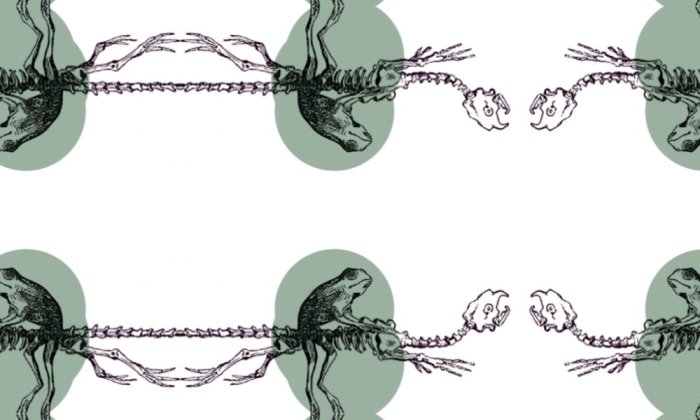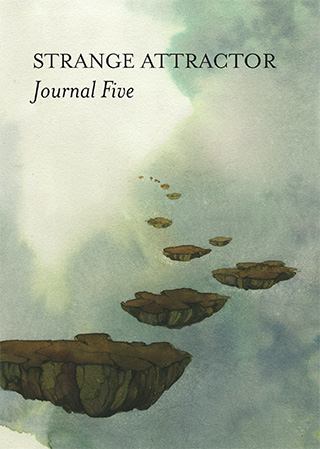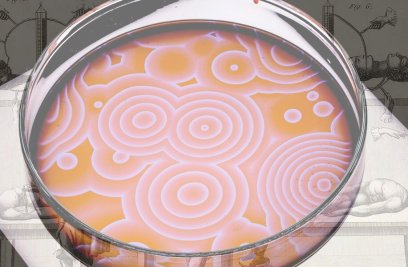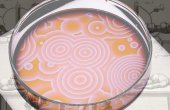Toad Lore: The Natterjack at the Edges of Occult History

The toad, that most reclusive of creatures, always lingers at the edges of occult history. From the marginalia of ancient tomes to the cupboards of cunning craft cottages, the toad is a living sigil found the world over as an icon of magical thinking, enchantment, and sorcery. The toad is a common companion to the witch and the sorcerer. A familiar of long renown, its abilities to blight fields, transport witches, suckle at the devil’s mark and play the impish demon, sowing chaos, like salt, into the wounds of Christendom, are something to marvel at.
While the toad’s magical role varies greatly across cultures there are some commonalities to its use. In particular their venom glands and, to a lesser extent, their skins are used in many practical forms: The various chemicals found there holding the key to the toad’s magical and medicinal popularity.
One of the earliest accounts of toad lore comes from Pliny’s first-century “Naturalis Historia,” in which he recounts the usefulness of the toad, or “bramble frog” (rubetae):
There are some frogs, again, which live only among brakes and thickets, for which reason they have received the name of rubetae, or “bramblefrogs,” … The Greeks call them phryni: they are the largest in size of all the frogs, have two protuberances like horns, and are full of poison. Authors quite vie with one another in relating marvellous stories about them; such, for instance, as that if they are brought into the midst of a concourse of people, silence will instantly prevail; as also that by throwing into boiling water a small bone that is found in their right side, the vessel will immediately cool, and the water refuse to boil again until it has been removed. This bone, they say, may be found by exposing a dead bramble-frog to ants, and letting them eat away the flesh: after which the bones must be put into the vessel, one by one.
On the other hand, again, in the left side of this reptile there is another bone, they say, which, thrown into water, has all the appearance of making it boil, and the name given to which is apocynon. This bone, it is said, has the property of assuaging the fury of dogs, and, if put into the drink, of conciliating love and ending discord and strife. Worn, too, as an amulet, it acts as an aphrodisiac, we are told. The bone, on the contrary, which is taken from the right side, acts powerfully as a refrigerative upon boiling liquids, it is said: attached to the patient in a piece of fresh lambskin, it has the repute of assuaging quartan [malaria] and other fevers, and of checking amorous propensities. The spleen of these frogs is used as an antidote to the various poisons that are prepared from them; and for all these purposes the liver is considered still more efficacious.
How then did such a lowly creature, so humble and seemingly powerless, come to have been regarded with such high esteem and evil intentions?
The Nature of Toad Venom
The toad’s primary defence mechanism is to excrete nasty chemicals (tropane alkaloids) from both their skin and specialised parotid glands found behind and above the eyes, on their head. This complex alkaloid cocktail gives the toad its distinct evolutionary advantage-it tastes awful.

Humans have used these toad poisons for centuries as both healing and harming substances.
Bufotenine, a common ingredient in toad venom, is a tryptamine related to the neurotransmitter serotonin, found throughout the world in a wide variety of plant, fungi and animal species. It has been used medicinally for centuries in China, the term’ ch’an su describing practices that involve the use of dried bufotenine — containing toad skins.
In the Americas bufotenine is found in the seeds of the Anadenanthera tree. These seeds are the primary ingredient of a powerfully psychoactive snuff used byindigenous peoples throughou tcentral and south America. As well as high doses of bufotenine these snuffs also feature the Banisteriopsisc aapi vine, which contains powerful MAOIs (monoamine oxidase inhibitors) that allow psychoactive compounds like bufotenine and DMT to become active at oral/nasal ingestion levels. The historic use these snuffs is well documented, particularly in the New World.
In the Old World it is less obvious where, and how, chemicals like bufotenine may have been used, though the practical magics described in folk culture provide a rather interesting avenue of inquiry.
The Natterjack & Its Relationship to Witchcraft
The Natterjack toad (Bufo calamita) is particular to European folk medicines and ritual magic practices from Germany to East Anglia. It’s also the only species of toad native to Ireland, home to much of the folk magic source material of the British Isles.
In East Anglia the secretive Society of the Horseman’s Word, and their less organised brethren, sought to ritually obtain the toad bone (as described by Pliny) from the natterjack, as a talismanic object to give its owner power over horses.
The toad bone ritual was simple enough: Take a natterjack toad and place it in a copper pot with holes, then bury it in an ant hill for long enough to allow the ants to strip the toad’s flesh clean. The resulting skeleton is then, after some particulars, tossed into a stream, and whichever bone floats upstream is identified as the toad bone.
Despite this gruesome method, the bone itself is mostly a fetish: a magical tool that holds no intrinsic practical value. However, the procedure does reveal some potential paths of inquiry.
A living toad, stressed out inside a copper pot and attacked by ants in the darkness, will produce a considerable amount of toad venom in an attempt to stave off the ants. So, once removed from the anthill, the copper pot will contain a toad stripped of its flesh, but also a residue of thick, venomous excretions that can be scraped off and used in more practical ways than just bone pointing.
Bufo calamita is singular in Europe for producing complex tryptamines, a family of chemicals that includes the hallucinogen DMT. Unlike its American cousin, the Sonoran Desert Toad (Bufo alvarius), which produces the powerful 5-MeO-DMT, the Natterjack contains a high level of bufoviridine, as well as the more common bufotenin.
Bufoviridine is an interesting and understudied tryptamine. Its chemical structure, in many ways similar to DMT, is modified with the inclusion of a sulfuric acid ring. This means that, in its natural state, the chemical is unlikely to make it to the brain and become centrally active. But there are natural ways to activate the pychoactive components of bufoviridine, and these could perhaps have occurred within the natterjack itself…
German and English texts commonly describe a witch or wizard keeping a toad familiar, a relationship built upon a parasitic practice of bloodletting in exchange for the familiar’s obedience.
German and English texts commonly describe a witch or wizard keeping a toad familiar, a relationship built upon a parasitic practice of bloodletting in exchange for the familiar’s obedience. While traditionally it was the witch who gave suck to the familiar, we read in some confessions that the toad would be fed and then “milked” for a substance that could then be used in ointments and other malefic practices.
This cycle, the witch feeding the toad and receiving its rewards, reflects the concept that the foodstuff being fed to the toad was somehow linked to the power that the toad itself had, and was then passed on to the witch. So perhaps the practitioner, be they alchemist or cunning craft witch, controlled the diet of the natterjack with specific foods, introducing into its system chemicals that then modified the naturally-occurring bufoviridine and bufotenin.
In the witch’s garden, species of insects, slugs and snails feed upon plants, such as hemlock and deadly nightshade, associated with toads in folklore; in doing so they ingest plant-based chemicals which, when fed to the toad, metabolize and commingle with the tryptamines excreted by its parotid glands. The witch then extracts, or milks, this venomous, potently hallucinogenic cocktail from the toad and uses it in her craft. We’ll return to this idea shortly.
On the Toadstone
Another longstanding Northern European folk tradition holds that the toad contains within its head above the eyes, a kind of philosopher’s stone, the toadstone, which possesses healing and anti-poisonous properties similar to those of the bezoar. While the objects commonly traded as toadstones were actually fossilised Lepidotes, found in cliffs throughout parts of Europe, this lore is interesting when we consider the position of the parotid glands.
Shakespeare writes in “As You Like It” (1599/1623):
Sweet are the uses of adversity,
Which, like the toad, ugly and venomous,
Wears yet a precious jewel in his head;
And this our life, exempt from public haunt,
Finds tongues in trees, books in the running brooks,
Sermons in stones, and good in everything.
I would not change it.
One wonders what state must be obtained in order to find “tongues in trees, books in the running brooks, and sermons in stones,” let alone “good in everything.”
Surely those who utilised this precious jewel gained profound insight.
A century later we find John Durant’s 1697 volume “Art and Naturejoyn Hand in Hand: Or, The Poor Mans Daily Companion,” which outlines the method of collecting the toad stone, strikingly similar to that of obtaining the toad bone of lore:
Of the Land Toad:
Take a great Toad, kill him, and put him into a Horse Dung Hill, there let him lie, and the Ants will Consume the Flesh; in the Head you shall find a thing like a Stone, great or little, which being set in Gold, and worn about a man or Woman, it doth give them warning of Mischief, or ill to them, that weareth it, by changing Colours in divers manners.
The particulars of this ritual, and its similarities to the East Anglian Toad Bone rite suggest that the later rite, as it has been passed down over the past century or more, is a corruption of a much earlier practice. Could it be that the disillusionment with not finding an actual stone in a toad’s head, and the market for “toadstones” with questionable effect, led to the use of the bone as a fetish?
Yet perhaps the stone or “precious jewel” is in fact the crystalised substance derived from the venom of the toad’s parotid glands. A substance known as far back as the 10th century in the field of alchemy.
Hentges & German Folklore
In Germany the toad is prevalent in both folk remedies and black magic:for example, an ancient practice in Central Europe saw a toad effigy, once made of wax and later more commonly of iron, held between the knees of expectant mothers to ease birth pains.
Late 19th century German commentators noted that both folk remedy and scientific method had determined that the toad’s defencemechanisms yielded a powerful toxin, one that could be incredibly useful. In “Die Kröte. Eine okkultistisch-kulturgeschichtliche Betrachtung” (1917/1918), Ernst Hentges writes of various chemical agents believed to exist in the secretions of the toad, and that, on bringing about physical stress in the animal, cause it to be even more powerful. Bufoviridine and bufotenin had not yet been discovered in Hentges’ time, so he believed that the active ingredient was methyl cyanide. Yet he was clearly aware that the toad’s secretions were the source of the active poison:
It was here scientifically proved that neither the drool nor the piss of the toad are poisonous. The malign toad who cannot bite because of its toothless snout was equipped by nature with its own self-preservation mechanism. On the skin covered with warts, especially on the head and back, multiple glands are distributed that slowly produce drops of white, nasty smelling secretion, which it has to defend itself from attacks. This slimy secretion is brought up from the mucous membrane through rubbing and agitating (of the toad). Therefrom comes the mad barking of the dogs accompanied by foaming at the mouth after it has taken a toad in the mouth. As it was satisfactorily undertaken in experiments of many scientists this gland secretion is a strongly active poisonous material. Gradiolet and Cloez (1851-52), Vulpian (1856), and Albani (1858) obtained the toad poison in purer form (as well as the newt and salamander poison) through extracting it in alcohol and tested its harmfulness for the stomach and the liver. According to Albani the poison seems to have a stronger effect in the stomach than in wounds. Zalesky presented the poison of the salamander, closely related with the toads poison, in pure form and showed that salamandrine (C19H31N02) has similar properties to strychnine and thus kills larger animals. French zoologist Prof. Emile Blanchard found that the toad poison contains ant (formic) acids and a carbylamin compound and that it remains even more potent after drying. According to Paul Bert, it’s because of the extremely poisonous methylcarbalamine (possibly ethanenitrile), whose presence in toad poison he first identified. Despite these very poisonous secretions toads are completely harmless animals for humans, because they don’t have thorns or teeth to inject their poison into human organisms as for example vipers and scorpions. The harmfulness which was presented by the 17th century poison makers should not be questioned and its effects are fully understood in light of modem science. Through torture and poking with needles toads were brought to produce their secretions upon which one would crush the arsenic dosed animal and let it rot in a cup. The remains of the carcass were dried and ground from which gave powder containing arsenic and Ptomaine on top of the toad poison.
In German folklore the poisonous hemlock plant, Conium maculatum, is said to be home to a toad, which sucked its poison from the plant. Coniine, the primary active poison in hemlock, is related to harmine, a monoamine oxidase inhibitor (MAOI). If coniine possesses MAOI abilities then it would be particularly useful in providing access to the brain for the bufotenin and bufoviridine tryptamines found in toad poisons with, potentially, a highly psychoactive effect.
Also in Germany we find that the folk name for Atropa belladonna, the Deadly Nightshade, is chrotteblueme or “toad flower.” While the active ingredients in belladonna — scopolamine and hyscomine — are not known to be MAOIs, they are a family of powerful tropane alkaloids, and the primary constituents of the fabled witch’s “flying ointment.”
Michael Scot & the Alchemists
Outside of common folk magic the toad was central to many formulas and rituals of “learned” magic, and a common figure in the literature of European alchemical practice. We find it dried and powdered, processed and tortured in the works of the Portuguese St Cyprian, and mentioned time and again by sorcerers, necromancers and alchemists throughout the late medieval and early modern eras.
We find the toad mentioned time and again by sorcerers, necromancers and alchemists throughout the late medieval and early modern eras.
In “Liber Dedali” (one of the books of his “Ars Alchemie,” published in the Latin by J. Wood Brown in his 1893 Scot biography), the 13th century alchemist and translator Michael Scot instructs the alchemist in the preparation of a powder, derived from toads, that brings “fantastic visions.” Core to the operation is filling a container with living toads in a wine and salt solution created beforehand (author’s own comments in brackets):
Total yield of the operation/procedure of boiled/fermented/ processed solution is the same as represented by the subject/ initial group/value, based on the quantity of the sample area (3.5).
After grinding it with caution, use only fresh (red/not congealed) human blood, to the amount of 3.3. Commit/use a Gutta [a device used in alchemy or medicine for accuracy, resembling the Gutta used in the architrave of Doric Classical Architecture … a small water-repelling, cone-shaped projection.]
Additionally, you may use a pinch of sulphur, 3.5 of talc and grind them white with the blood and salt. After they have dried safely, transmute them with heat from the Sun or an oven. Ensure full drying by stirring with mortar and pestle. It may be kept, and used when need arises. Apply heat from a fire to activate, taking care not to scatter the solution by use of bellows.
The quantity [unknown value] of solution of not more than 5 pounds is removed from the heat of the fire to be thrown in to salt/brine-water for a long time (between 45 and 75 minutes) then this is the best compound.
Take five (black) toads and put them in a vase [previously filled with wine, which reacts to the toad’s venom and results in a powerful chemical transformation, after the toad poisons itself and dies] to prepare them to receive Victorious Rose [unknown plant] or [unknown kind of Arabic plant], and a dried solution of ground Christmas Rose/Black Hellebore; also a mixture of brine-water in equal amounts as the previously-mentioned dried solution; also with ammoniated salt measuring 3.5, ground in a hole, and dried with urine from nine pigs, from the same field.
The resultant “dust” does wonders, and cannot help to. It transmutes everything into perfect clarity, as the clarity of the Moon. It completely changes the perspective, as Mars is said to do. If you have imbibed the dust at a measurement of 3.2, and drink, based on your own perspective, you will find life-spirit which transcends and far outweighs the effort or cost you have put into the making of this product.
You may use the dust as substitute for salt, as is done by Southern Spaniards, in Northern Italy, and in Belgium [Roman province of Gallia Belgica Muide].
Do not document your observations, while under the influence, though you may record them after the effects have worn off. I have unsatisfactorily (in a pale imitation of the experience) written down my feelings (while under the influence) in the past. While undergoing the effects of the compound, the NOW is separated from the THEN/later.
Use ammoniated aluminium-sulfate on the seeds in pre-heated saltbrine-water. Return the water to double the previous temperature. Then congeal/harden the substance in wax. Here, do not doubt the process: you are well on your way to mastering the final product.
After this, place the waxed product between two saucers and place in a glass vessel. I implore you to close your mouth. Wash away the salt. After a day, cut it in half, using Venetian Ceruse [Spirits of Saturn]: it will then be hardened and completed, able to withstand great temperatures.
Before halving the product, ensure that calcination has fully taken effect, & that you have introduced the Ceruse only at the right time (after the sweating, washing off of salt, & the passage of a day). The product will appear white. This calcination process method unknown/ related to Alchemal Mercury, and should not have additional steps added to it.
This you will see, when you lose the whiteness of the product, and can only perfect by trial and error. If you have allowed too much water to remain in the product, you will find out in the Spring. If, however, you undergo the Springtime, and it works, you should repeat the same experiment in the same way. Archelaus [an Ionian philosopher] discovered his truths through the product. You, too, may reduce the product to ash and understand the same truths.
Then, take the final product, after it has set the appropriate amount of time, and use as much fresh juice as comes from the diameter of the Hellebore, as much as you dare, and place it into an unused vessel, containing toads.
Let them drink for nine days. Mix the ammoniated product with pig urine, dry and grind. You will have Wisdom, and you will be of the third level of eight. Rejoice.
Even Alchemists who deal with red clay and red earth — dust buffoons, all of them — were able to achieve success by following this recipe. What they possessed, few people knew.
This type of knowledge derives straight from the blessed God Almighty, which is the first cause of all things. All that is needful may be acquired, by following this recipe, as these men did, I say to you firmly. Thus, they kept silent as to the recipe, and as to the essence of the product, and sold only regular salts in the open.
To Milk a Toad
Maintaining a toad as a living alchemical crucible is, in fact, a relatively simple task, requiring only control of its diet and occasional agitation to some degree. Let us imagine the scene…
The witch wakes before sunrise, going to the garden to collect snails and slugs which have been feasting on particular cultivated plants. Their brown and grey bodies are plump with a diet of complex chemicals — coniine, hyoscyamine, atropine, scopolamine and a dozen others — that, while poisonous to a mammal, cause these invertebrates no ill effects.
The witch returns to her kitchen, where she keeps her toad familiars in a comfortable box. She feeds them snails and slugs by hand, the toads filling their digestive tracts with the same cocktail of tropane alkoloids, tryptamines and MAOIs that their meal has previously consumed.
The toads, feted with such a feast, may not even notice the new chemicals brewing in their system, and simply perspire them out unawares via their urine, skin or gland secretions. The tryptamines of the toad’s natural defenses, mixed with the tropane alkaloids and monoamine oxidase inhibitors (MAOI) absorbed from their meal, have now become a powerful entheogenic secretion.
When the time comes, the witch returns to milk her toads. Each is gently removed from their box and its parotid glands squeezed to release the desired toxins. The milked toad is returned to its brethren, distressed but relatively unharmed, each in turn providing their portion of the witch’s sacrament.
To the historical witch and alchemist this Green Crucible is both a familiar and a tool. The Natterjack toad was a laboratory, refining and enhancing organic chemicals in the practice of natural magic and possessing the qualities required to bring about a profound control of organic chemistry. It was a chemical crucible in which were refined the substances required to transcend the mundane — the secret art behind many ancient European entheogenic and medicinal practices.
Eldred Hieronymus Wormwood is a folklorist, antiquarian, folkwitch and book collector living in rural Portugal. He is the editor of the Skeptical Occultist, the Folkwitch journal, and the proprietor of Alkahest Press. When not haunting the shelves of various bookshops and private libraries he can be found digging among ruins for clues to mankind’s forgotten past.



